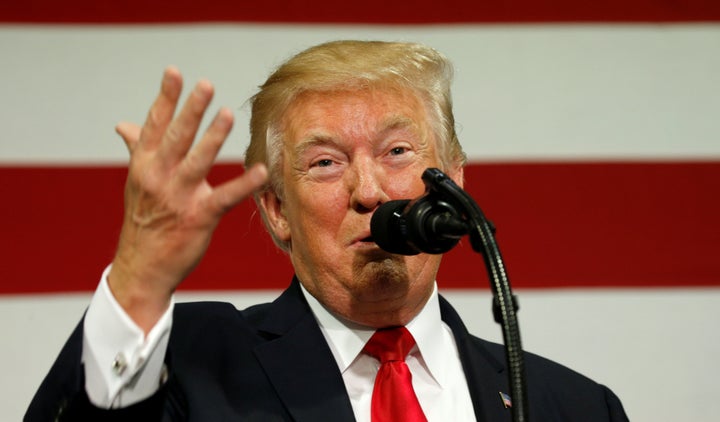WASHINGTON ― President Donald Trump plans to unveil Wednesday what the White House is calling a “middle-class” tax cut but which at this point cuts taxes only for business owners and the wealthy.
Shareholders of corporations would enjoy a rate cut from the current maximum of 35 percent down to 20 percent, according to a White House briefing Tuesday. Owners of “small businesses,” who pay taxes on their individual returns rather than with a corporate filing, would pay no more than 25 percent, instead of the current maximum of 39.6 percent. And the wealthiest Americans would see that top 39.6 percent rate fall to 35 percent.
As for lower- and middle-class Americans, three Trump administration officials who spoke on the condition of anonymity would say only that Trump and House and Senate Republican leaders are promising to set rates and tax bracket thresholds so that those taxpayers would enjoy the most savings.
“This package is completely designed with the middle class in mind,” one of the officials said. “Tax relief in this package is focused on middle-class families.”
The details of how that would happen, though, is left to the House and Senate tax committees.
“We are not going to provide the specific income levels,” the official said. “We’re not trying to write a bill. We’re trying to provide a framework.”
The White House officials said the current seven tax brackets that range from 10 percent to 39.6 percent would be collapsed into three: 12 percent, 25 percent and 35 percent.
Most deductions apart from home mortgage interest and charitable deductions would be eliminated, including the deduction for state and local taxes, which currently provide a major break on federal income taxes for residents of coastal and high-tax states.
Also eliminated would be the personal exemptions, which let taxpayers deduct $4,050 per person in the household.
The White House officials said these would be offset by an increase in the standard deduction from the current $12,600 per married couple to $24,000 and an increase in the child tax credit from $1,000 to a higher level.
Still, how much and even whether this would provide an overall tax reduction for a family of four is unclear. Currently, that family starts out with at least $28,800 of income exempt from taxes, thanks to the standard deduction plus four exemptions. That figure is nearly $5,000 more than the $24,000 standard deduction the administration is touting.
“If they’re not going to show any numbers, it’s impossible to know how this works,” said Howard Gleckman, a senior fellow at the liberal Tax Policy Center.
Gleckman added that it was theoretically possible that a larger child tax credit would offset the loss of the exemptions but that it would depend on the size of the family and a range of other itemized deductions that would likely be eliminated.
“Without knowing exactly what the plan is for those other itemized deductions, it’s very hard to say whether people are better off or not,” Gleckman said.
The White House officials would not provide any target thresholds for the tax brackets that could help determine how much, if anything, different families would save under the new plan. Nor would they say how much the child tax credit might be increased. They did say that House and Senate committees would be allowed to impose a fourth bracket above the 35 percent one.
“We are committed to making sure the tax code is at least as progressive as the existing tax code, and does not shift the tax burden from high-income to low- and middle-income taxpayers,” another official said.
But congressional tax writers have always had the ability to create higher tax brackets for the wealthy, and Republicans for decades have been loath to do so. Without a fourth, higher bracket, though, the plan would almost certainly cut taxes for the richest Americans ― something Trump has said repeatedly he would not do.
The White House officials also said the plan would increase the projected debt by as much as House and Senate members choose to allow in their budget resolution for the tax bill. The special “budget reconciliation rules” would let congressional Republicans pass tax cuts with only 50 votes in the Senate, where they currently hold 52 seats and the vice president could break a tie. Ordinarily a bill needs 60 votes to avoid a possible filibuster.
One major disadvantage of using the special rules, however, is that tax changes would expire in 10 years unless projections show that the 11th year would no longer generate a deficit ― an unlikely scenario given the steep cuts Republicans want.
Arthur Delaney contributed to this report.

